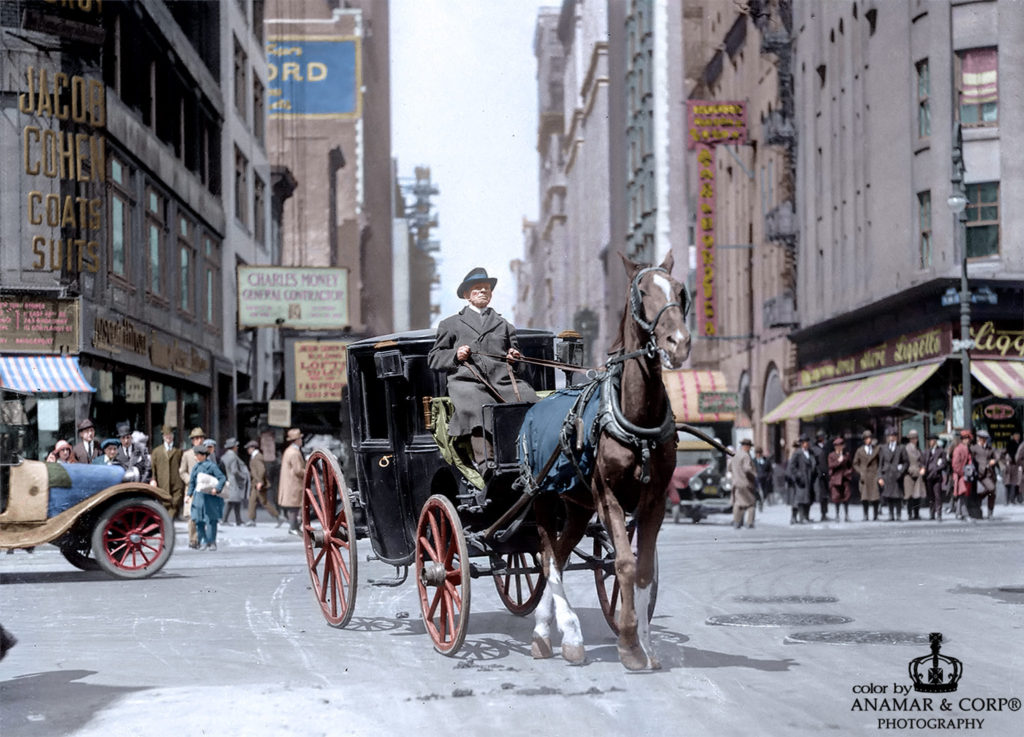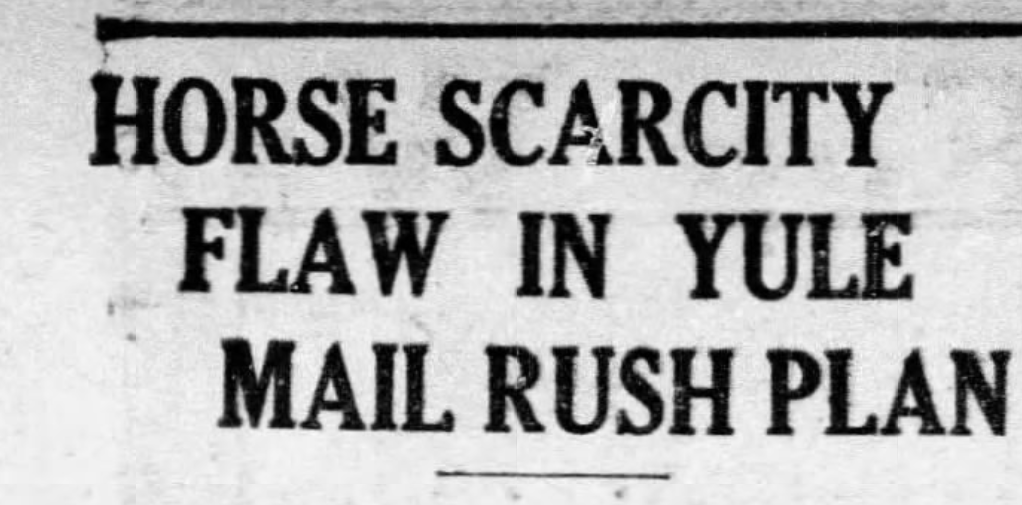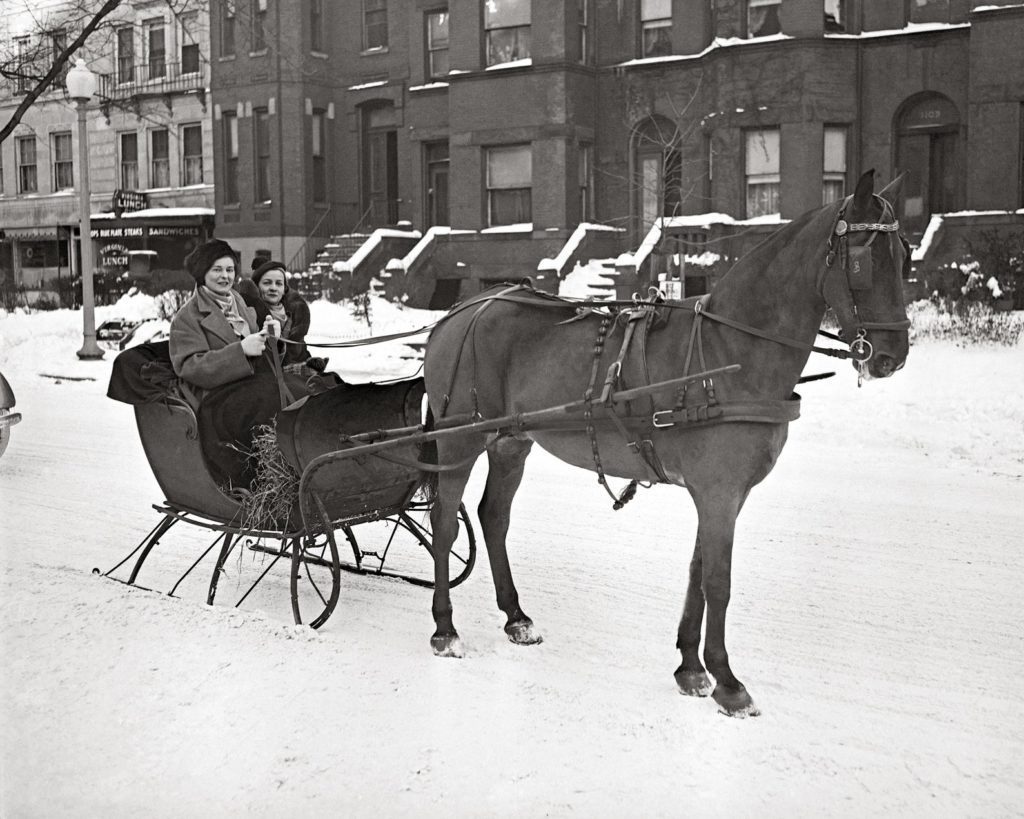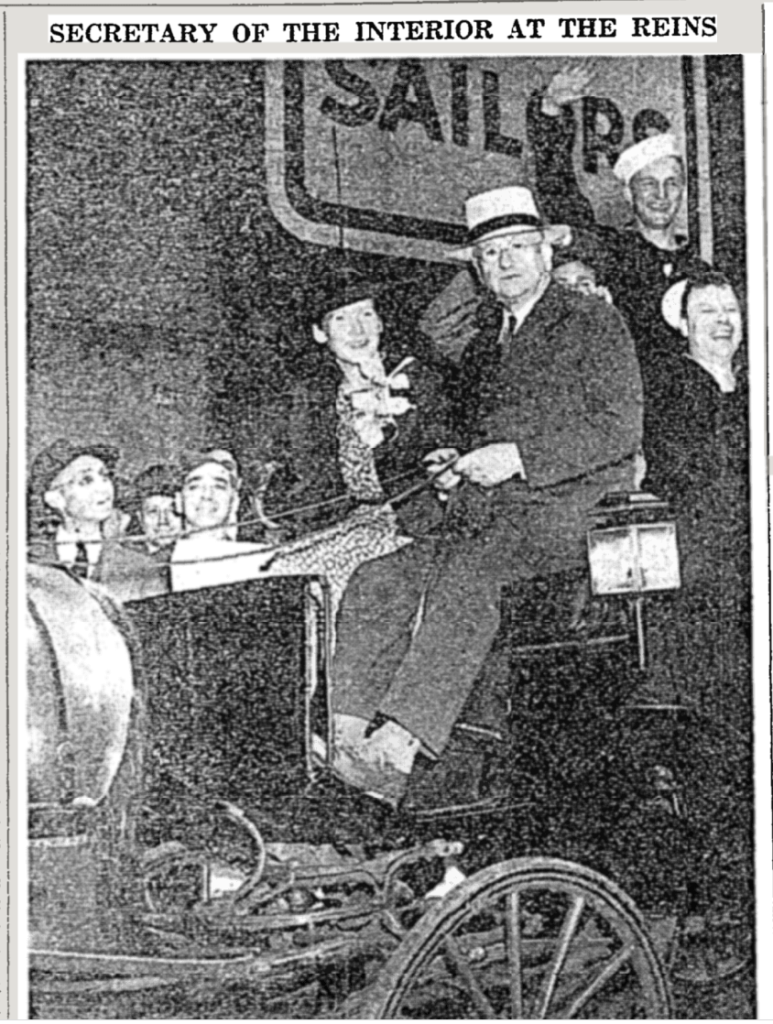
I recently came across this fantastic colorized photograph of John Otterman, one of the last horse-drawn taxi drivers of New York City. Otterman, who was 72 when this photo was taken, had been working as a cab driver for 40 years. He spent 25 of those years with his horse, Janethe. I thought the story of John Otterman and Janethe could be one of the best horse tales I’ve discovered, so I spent several hours doing research.
Sadly, I was not able to find any more information about John Otterman and his horse. Although numerous newspapers across the country published this photo and the one below, only a small caption accompanied the photograph. Looking at the photograph, however, one can tell that both John and his horse took great pride in the service they provided for New Yorkers.
To be sure, heavy draft horses were still hauling freight throughout the city, but by 1922, horse-drawn cab drivers were a dying breed.

Although I hit a dead end with Otterman, I did discover several other unique horse tales that took place during the the early decades of the 20th century, when motorized vehicles were taking New York City and other cities by storm.
Even though the last horses of the New York Fire Department made their final run in December 1922, and the few remaining horse-drawn cab drivers were just eking out a living on Fifth Avenue and Central Park South in the late 1930s, horses continued to play a vital role in surprising ways, especially during war time.
When the going got tough in New York, the tough New Yorkers got going — with horses.
Holiday Horse Shortage in Brooklyn
Talk about an odd supply chain issue. What would life be like today if we depended on horses to help deliver our holiday mail and Amazon packages? (Actually, we could possibly be better off…)
In November 1929, expectations were high for record-breaking mail volume. With the holiday season less than a month away, Brooklyn Postmaster Albert Firmin began putting plans in place to ensure everyone received their mail in time for Christmas. In addition to calling on the public to do its mailing early, he hired 1,500 extra carriers and 3,000 additional clerks, and added 60 motorized vehicles to the existing fleet.
To supplement the motorized mail trucks, Firmin also sought to hire 200 horse-drawn vehicles. The horse-drawn vehicles would be used to deliver the regular parcel post loads in the downtown district, where traffic was slower, and to deliver mail to residential areas.

Although the Brooklyn Post Office had been supplementing its motorized fleet with horse-drawn vehicles during the holiday season for many years, for some reason there was a shortage of horses in 1929. In fact, Postmaster Firmin could only find horses at laundry facilities. As he told the New York Daily News, it appeared that laundries were the only businesses in Brooklyn still using horses.
Firmin said he hoped to hire as many laundry horses as possible for the holiday season. The Daily News reporter joked, “So if your laundry gets hung up about Christmas time, you’ll know Christmas presents are to blame.”
Emergency Call for Horses to Deliver Expectant Mothers
We all think it’s important to get our holiday mail in time, but I have a feeling expectant mothers would say it’s more important to get to the hospital in time.
In December 1947, a Christmastime snow storm created a dangerous situation for Brooklyn residents who needed to get to the hospital. According to The New York Times, an emergency appeal for horse-drawn sleds and other vehicles was put out on December 26 by radio station WNEW. The sleds were primarily needed to help deliver pregnant women to hospitals.

Apparently, the Morro Limousine Company on Prospect Park West was in urgent need of sleds and other vehicles that could make it through the deep snow. All 18 of its vehicles, which were used for transporting pregnant women and ill patients to hospitals, had all stalled in the snow. The company was receiving 25 calls an hour for hospital transports but was unable to respond.
Horse-drawn vehicles were made available at no charge to those women and other patients who needed to get to a hospital during the storm. This solution was pure horse sense, if you ask me.
Horse-Drawn Cabs for Saks Shoppers

In 1942 and 1943, the Saks Thirty-Fourth Street store provided a free transportation service to draw up wartime business and encourage summer shoppers on Saturdays.
The department store provided four horse-drawn victoria carriages, each driven by old-time cab drivers, to transport perspective shoppers from Grand Central Station to Saks. One of the drivers hired in 1942 was Frank McCann, who had spent 50 years working as a horse-drawn cabbie.
More than 100 shoppers were transported between the rail station and Saks in one day, “arousing the interest of pedestrians all along the route.”
I have a feeling John Otterman would have welcomed a chance to drive one of these carriages, had he still been alive at this time.
No Gas? How About a Horse?
On May 15, 1942, gasoline rationing began in 17 Eastern states as part of the American war effort during World War II. By the end of the year, under President Franklin D. Roosevelt, mandatory gas rationing was in effect in all 48 states. (Could you imagine a president trying to do this today?)
About a week after the rations first went into effect, Secretary of the Interior Harold L. Ickes and his wife attended a fundraising luncheon at the former Hotel Commodore on 42nd Street between Lexington and Park Avenues. Staging his own gasoline conservation campaign, he arrived at the hotel in a horse-drawn carriage. During the luncheon, he warned guests that they may also be forced to replace their gasoline-powered vehicles with horses.

“I’m delighted with the way gasoline rationing has been received, but there may be more of it,” he said. “You can say to yourself that we can thank God because we are keeping those bombers flying. We will go without even one gallon of gasoline to send our flyers over Tokyo, Rome, and Berlin.”
History does tend to repeat itself. Maybe we should all start learning how to drive or ride horses…



What a great collection of historical gold, Peggy! I loved every word of it. I was also interested in the end story, about the gasoline rationing during World War II. It did help create a resurge in demand for horses, not only because of gasoline but rubber for tires was either rationed or difficult and dangerous to obtain from the Asian nations where rubber grows.
The comic entertainer Spike Jones made a short feature for movie theaters making good fun of the new wartime interest in horses, by portraying the village blacksmith as the new in-demand service provider. Check it out here: https://www.youtube.com/watch?v=ctEJ-rCkm3c It’s fun!
Fran, I’ll have to check this out — thank you for sharing, and I’m glad you enjoyed the horse tales! Interesting point about the rubber tires, too.
Albert Firmin is my great great Uncle on my dads side.
Dora,
I’m so glad you found this story — it’s always fun to hear from people who find one of their ancestors in my stories!